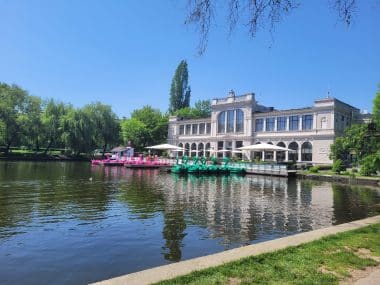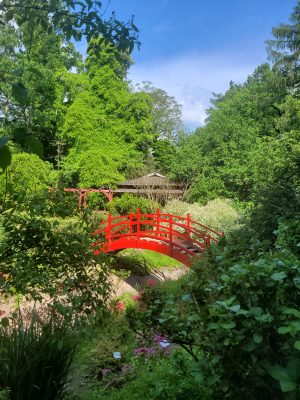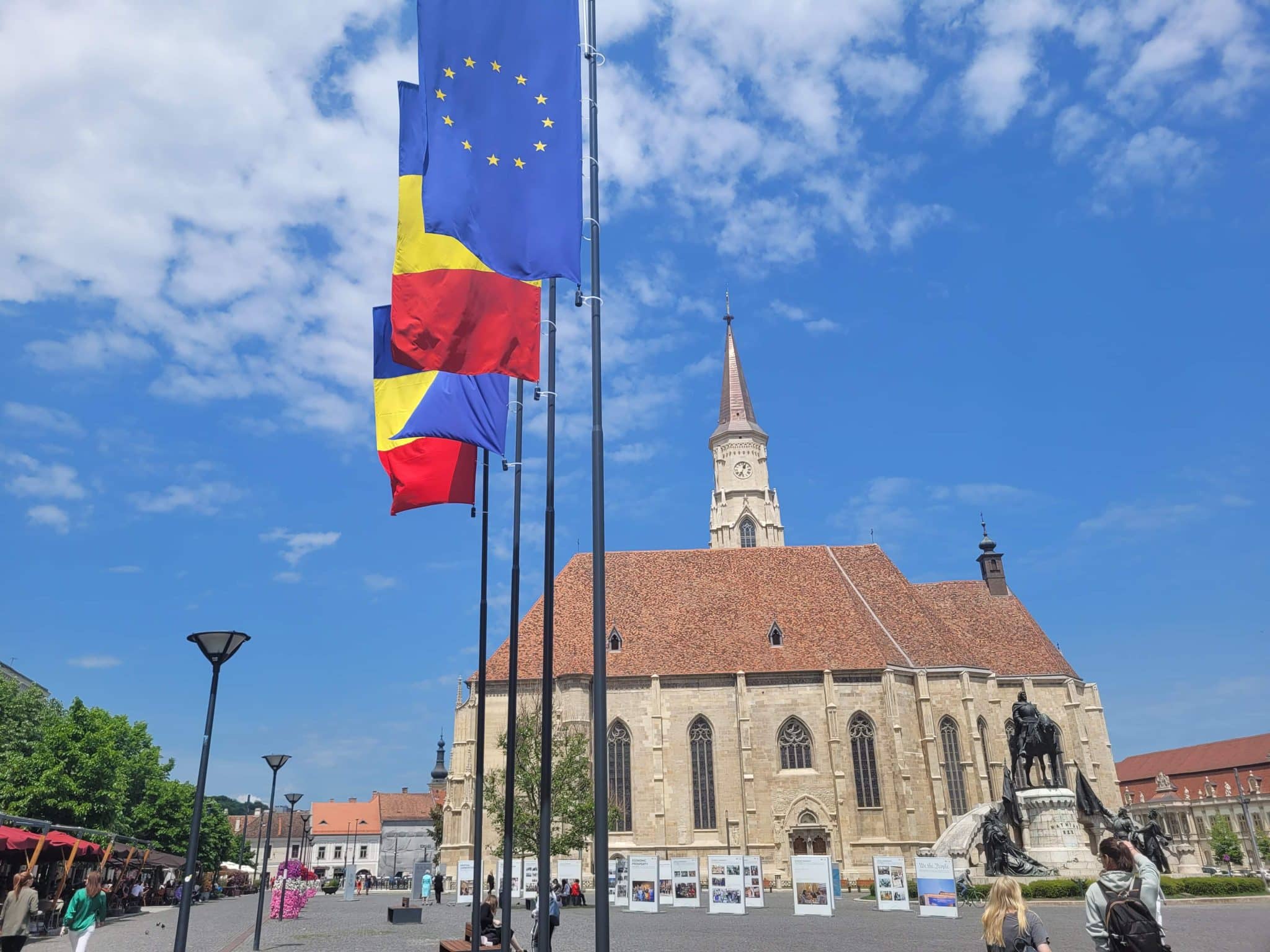by Esther Burmann
From Germany by direct flight to the heart of Transylvania
Summer is coming to an end and with it the high season for holiday trips to the beach or the mountains. Late summer and autumn are ideal for city trips due to the mild temperatures. But you often have to dig deep into your pocket for this. For those who prefer to travel on a low-budget and like to go on a city tour, the Romanian city of Cluj-Napoca is just the thing.
Cluj-Napoca is called Cluj-Napoca in German and is the second largest city in Romania. It is located in the northwest of the country, in the heart of Transylvania. If you only think of bats and Dracula when you hear the word Transylvania, you will be surprised – Cluj-Napoca has much more to offer than just vampires.
Off to Transylvania

and sea monsters pedal boats are waiting for the next one in the central park
Ride, Picture: Esther Burmann
The city has its own airport, which is served by low-cost airlines with direct flights from Berlin, Dortmund, Frankfurt, Munich, Nuremberg, Vienna and Basel . As soon as you land, you can see how much green there is in Cluj County.
Due to the high number of students, who make up a quarter of the population, the city looks young and modern. In addition to the city center, where you can stroll or drink coffee, there are some parks that invite you to relax.
Nature lovers will get their money’s worth, especially in the botanical garden. Tickets cost adults 15 Romanian lei, the equivalent of 3 euros. Children, students and pensioners pay about half. On almost 14 hectares, you can find over 10,000 plant species from all over the world in the botanical garden. Greenhouses with tropical plants can also be visited.
The insider tip for walking
An insider tip for all travelers is the central cemetery. This is not far from the botanical garden. Due to its location on the mountain, you have a fascinating view. There you can take a wonderful walk or simply enjoy the peace and quiet. The first graves date back to the 16th century.
The city center of Cluj-Napoca invites you to stroll. There are many small shops, restaurants and cafes where you can take a break. In the center of the city center, on the Unification Square, is the Catholic Church of St. Michael “Sfântul Mihail”. The university’s library is particularly suitable for browsing. For those interested in culture, there is the National Museum of the History of Transylvania and the Transylvanian Ethnographic Museum in the city centre.
A park with a view

Another place not to be missed is Cetățuia Park. This is located on top of a mountain and you have a great view over the city. Admission is free. Sturdy shoes and mosquito repellent are recommended, especially in the evening hours. The park is used by many young people for meetings in larger or smaller groups in the evening. Even in the dark, the view over the illuminated city is worthwhile. Due to the uneven ground, you should have a flashlight with you.
If you prefer it at ground level, you will like the Central Park. Admission is also free here. The park offers opportunities for walking, exercising and drinking coffee. There is a playground for the younger visitors. The highlight of the park is the small lake where you can go pedal boating.
Not only worth seeing during the day
Cluj-Napoca also has something to offer for nocturnal activities. Strada Piezișă is teeming with cozy pubs and pubs. There you can drink both Romanian and international beer in convivial rounds. Wine is also grown in Romania . Those who prefer to drink spirits will also find what they are looking for: Țuica, Palinka and Horinca are traditional Romanian schnapps.
The entire city of Cluj-Napoca is very low-budget friendly. You can travel by bus and train for the equivalent of 60 cents per trip. Taxis also cost significantly less there than in Germany. For a ten-minute ride, you pay about three euros. You can also eat out in Cluj for little money. Typical Romanian dishes are meat-rich, but there are also vegetarian and vegan options in almost every restaurant. If you like desserts, you should definitely try Papanași during your visit. The typical Romanian balls with cream cream and jam can be ordered as a dessert in almost every restaurant.
A Ferris wheel 120 meters underground
If you plan a little more time for your trip to Cluj-Napoca, you have the opportunity to visit the salt mine in Turda. This is about an hour’s drive from Cluj-Napoca and consists of five salt mines, four of which can be visited. You should pack warm clothes for the visit, because the temperature is constant at 10 to 12 degrees Celsius. 120 meters underground, you can not only breathe in the healthy air of the salt mine, but even play mini golf and billiards, ride a Ferris wheel or paddle a boat on the lake. There is also a theatre there. On weekdays, adults pay 50 Romanian lei, which is about 10 euros. On weekends there is a surcharge of 10 lei. Reduced admission costs 30 lei per day, the equivalent of 6 euros. The salt mine, which served as a cheese warehouse until the 1990s, was expanded with EU funds, among other things, as it not only serves as a tourist attraction, but also promotes respiratory health.
Cluj-Napoca as a festival stronghold
Cluj-Napoca also has a lot to offer for festival fans. The city is the Romanian festival stronghold. The UNTOLD Festival takes place there every year. The twelfth Transylvanian Salsa Festival starts in November. The Kizomba Festival can also be visited annually in Cluj.
So it doesn’t get boring in Cluj-Napoca and if you want to see more than just this city, you will quickly find what you are looking for in the surrounding area. The trip is therefore worthwhile for every low-budget holidaymaker who wants to combine city trip, culture and nature in one trip.


